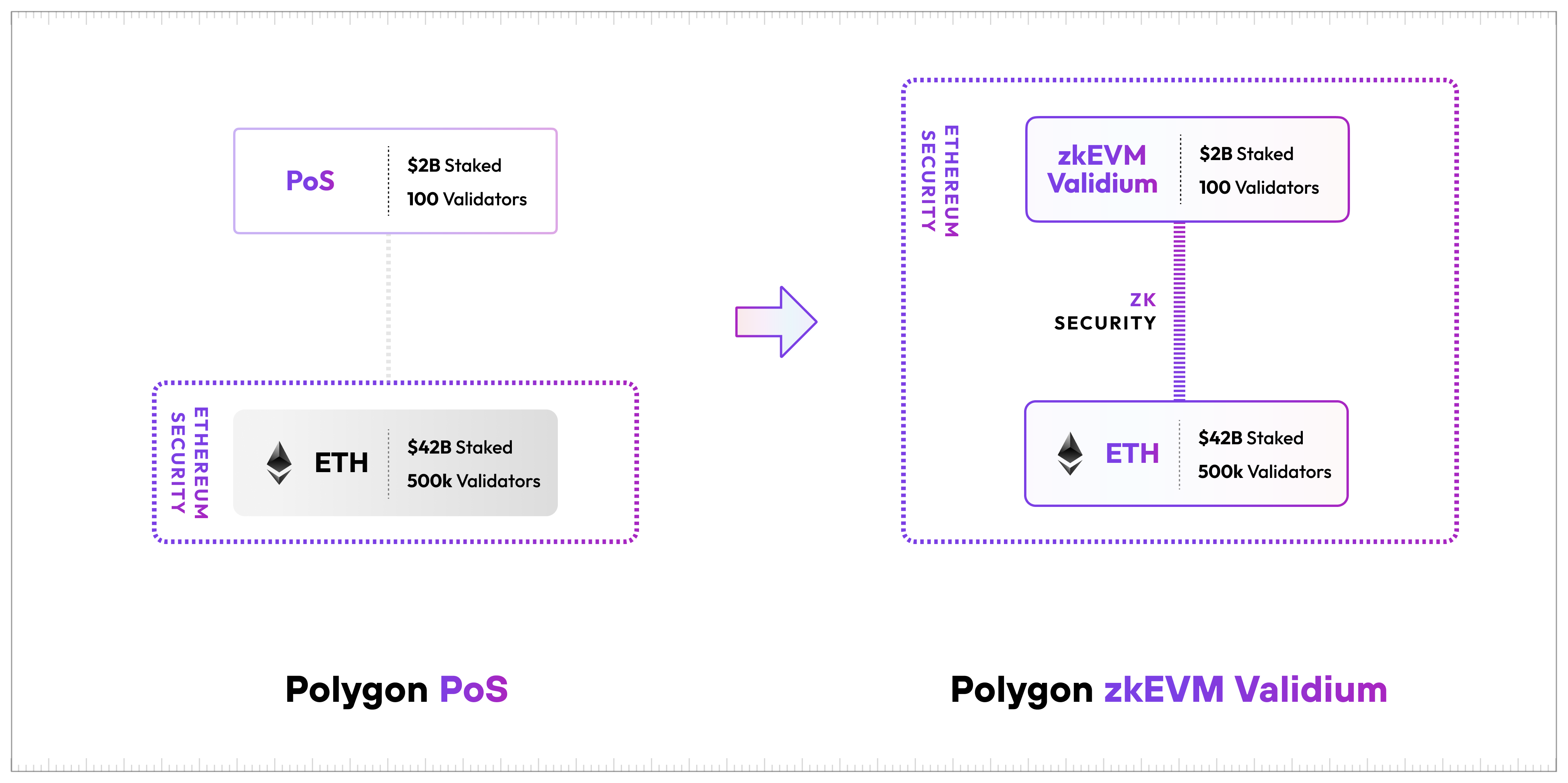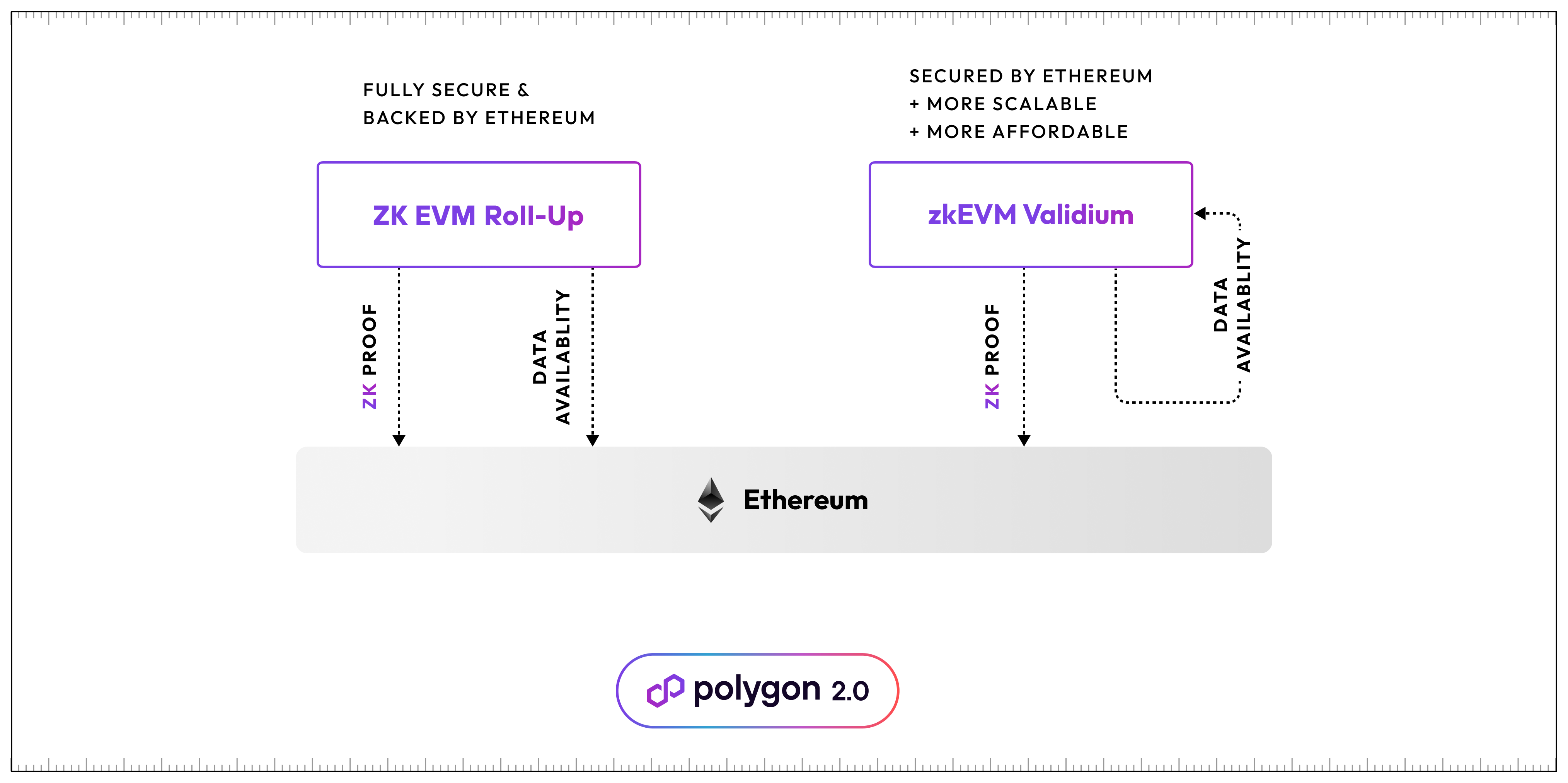Polygon not only returns to the Layer 2 race with Polygon zkEVM but also the story of Polyon zkEVM Validium, also known as Polygon 2.0. So what is different and interesting about Polygon 2.0 compared to the old Polygon POS model? Let’s find out together in the article below.
To understand more about this article, people can refer to some of the articles below:
- What is Zk Rollup? Zk Rollup Solution Overview
- What is zkEVM? Distinguishing 4 Types of zkEVM
- What is Polygon (MATIC)? Polygon Cryptocurrency Overview
Backlog Issues With Polygon PoS
Blockchain is just a cover
For a long time, Polygon PoS has always prided itself on being a Blockchain with security, decentralization and has completely solved the problem of scalability on Ethereum. However, if we look closely at a Blockchain with only about 100 Validators, is it really decentralized? Then the answer is definitely no!
In the past, users often paid little attention to this factor and were only interested in fast transactions and low costs, but in the context of a downtrend, users began to have a more careful perspective. Of course, Polygon cannot always “cover the holy eyes” forever. One of the most important elements of Blockchain is Decentralization. If not decentralized, using Paypal or Visa would be much better. That’s why Polygon must change.
Similar to the case of Polygon, it is BNB Chain. BNB Chain even only has a few dozen Validators but never talks too much about it.
The network is often congested

We often know that Polyogn is a network with extremely cheap transaction fees. However, because it is so cheap, Polygon’s network is often spammed by users, so sometimes the Polygon network becomes congested. Perhaps if you are a regular user of DeFi, it is very normal for a transaction on Polygon to be pending for a week or a month.
We have to deposit more money just to cancel the transaction.
In the past, many times the Polygon network was overloaded with games like Sunflower Farmer in early 2022. This is also a painful problem for the development team and that is also the reason Polygon 2.0 was born.
Polygon 2.0 Is Born & Returns to Ethereum
Some of the reasons for the birth of Polygon 2.0
As I shared above, Polygon 2.0 was born to solve outstanding problems at Polygon PoS such as decentralization, the network is often spammed, leading to congestion. Besides the reasons coming from the remaining problems with Polygon PoS, there are some other reasons as follows:
- Polygon’s development team is very sensitive to business opportunities, which has proven how successful Polygon PoS has been in the past cycle. Clearly, Layer 2 and zkEVM are trends for the present and the future.
- The development team has also researched many different Layer 2 expansion solutions and clearly the decision to switch to Polygon PoS is in their long-term plans.
I think one of the most important reasons is that the Polygon development team has prepared for a new growth cycle. Even becoming a Layer 2 on Ethereum, they did not eliminate MATIC but continued to build more Use Cases for MATIC.
Model of Polygon 2.0

Polygon PoS will transform to become a Polygon zkEVM Validium platform. Validum is a similar technology to zkRollup but the difference here is Data Availability as follows:
- zkRollup: All transactions are grouped into one form of Call Data. This Call Data along with ZKP transaction proof will be sent to Layer 1 where it is agreed upon and stored.
- Validium: Unlike zkRollup, Validium only sends transaction proof, ZKP, to Layer 1 and all data will be stored offchain by the platform’s own Sequencers.
With Validium technology, it greatly improves scalability on Polygon 2.0, including transaction speed and transaction fees, but the trade-off here is security, decentralization, and integrity. of the network. Validators at the Polygon PoS network continue to play an important role in two main tasks on Polygon 2.0 including:
- Plays a similar role as a Sequencer in determining valid transactions, then sorting the transactions into blocks and transferring them to Layer 1.
- Plays an important role in data storage to ensure data availability and network integrity.
With 100 Validators converting from Polygon PoS to Sequencer in Polygon 2.0, Polygon zkEVM Validium becomes one of the most decentralized Layer 2 platforms. However, if there are no plans for decentralizing the Sequencer, Polygon will continue to become a centralized Layer 2 similar to Polygon PoS.

So why Validium and not zkRollup? Understandably, Polygon previously spent hundreds of millions of dollars to acquire a Layer 2 solution called Hermez and has now changed its name to Polygon zkEVM. Polygon zkEVM is a true zkRollup platform, so Polygon doesn’t need another zkRollup, they need another product focused on scalability.
Obviously, with this trend, Polygon 2.0 will have some outstanding features as follows:
- Inherits minimal security and decentralization from Ethereum.
- Powerful scalability with near-instant transaction and near-zero non-transaction speeds. Transaction speed on Validium can reach 10,000 TPS compared to zkRollup which is only about 2,000 TPS.
- Validium technology is not inherently compatible with EVM, but with Polygon, this may be the first platform. Help projects on Ethereum continue to easily expand to Polygon 2.0.
- There is no delay in withdrawing money, helping users optimize their ability to use capital.
With such a development direction, it is clear that Polygon 2.0 will focus on areas that require large scalability such as Gaming, NFT, Social or Trading. DeFi-oriented protocols will be prioritized for development at Polygon zkEVM. Obviously, Polygon is predicting that the upcoming growth cycle will still have the presence of NFTs and Gaming, so they are preparing infrastructure in advance.
Projections for Polygon 2.0
With Polygon 2.0, most of Polygon’s products will be returned to Ethereum with many extremely diverse Layer 2 solutions suitable for all developers’ needs.
- Polygon 2.0: Is a version that uses Validium technology to aim for a Blockchain that favors scalability rather than decentralization and security. Suitable for NFT, Gaming, Social or Trading projects.
- Polygon zkEVM: Is a version that uses zkRollup technology to aim for a Blockchain that favors decentralization and security rather than scalability. Suitable for DeFi projects.
- Polyon Miden: It is a zkEVM platform but the difference with Polygon zkEVM is that Miden uses STARK proofs similar to StarkNet and Polyogn zkEVM uses SNARK proofs similar to zkSync.
- Polygon Supernet: Is a version targeting the Internet of Blockchain model towards App-chains models.
Based on Polygon’s products, in the upcoming growth cycle the development team will bet a lot on Layer 2 and especially zkRollup. An interesting point is that despite being very confident and bullish for Layer 2, Polygon has not developed any Optimistic Rollup products. Besides, they still bet on all industries when building both Polygon 2.0 and Polygon zkEVM in parallel.
With the current success of Optimism and Arbitrum, we can absolutely be positive and optimistic about the upcoming future of Layer 2. However, will zkRollup overshadow, take over a portion of the pie or even is it beating Optimistic Rollup to dominate the Layer 2 array?
Summary
Polygon 2.0 marks the development team’s return to Ethereum after many years of living under the guise of Sidechains and not being considered a true Layer 2. What do you think about this almost 180 degree change of Polygon, will Polygon 2.0 be successful or not?


